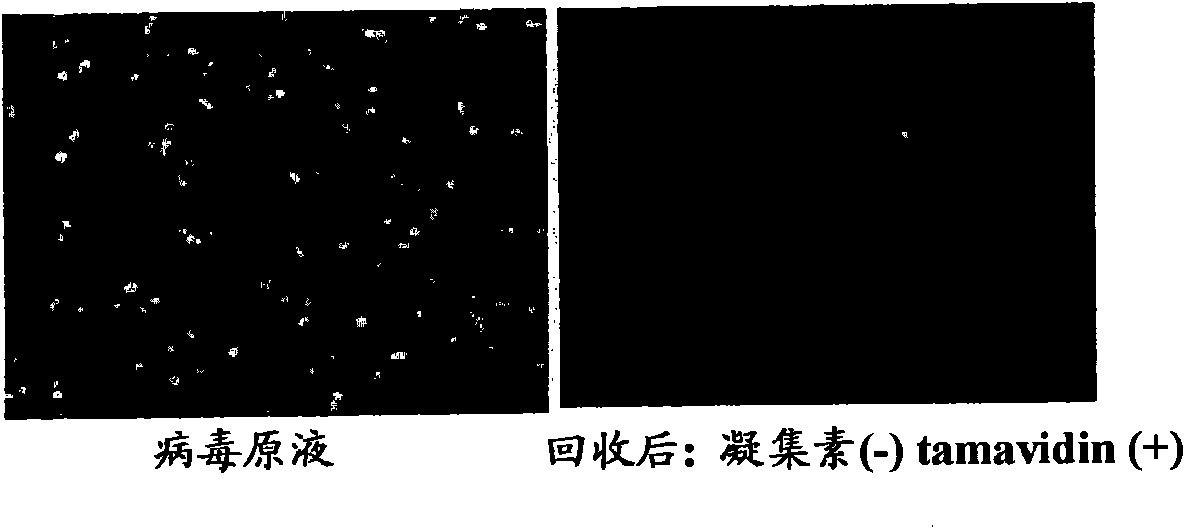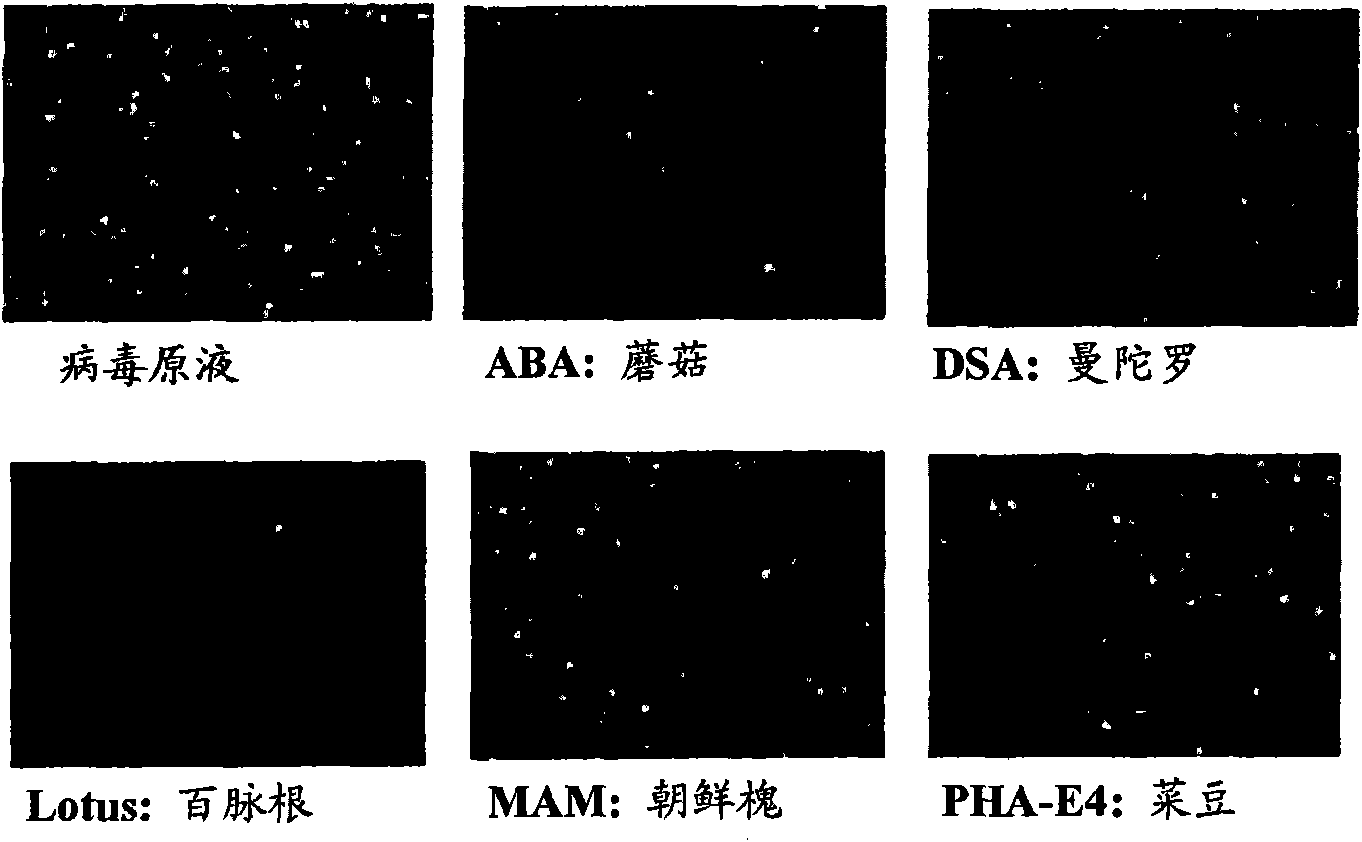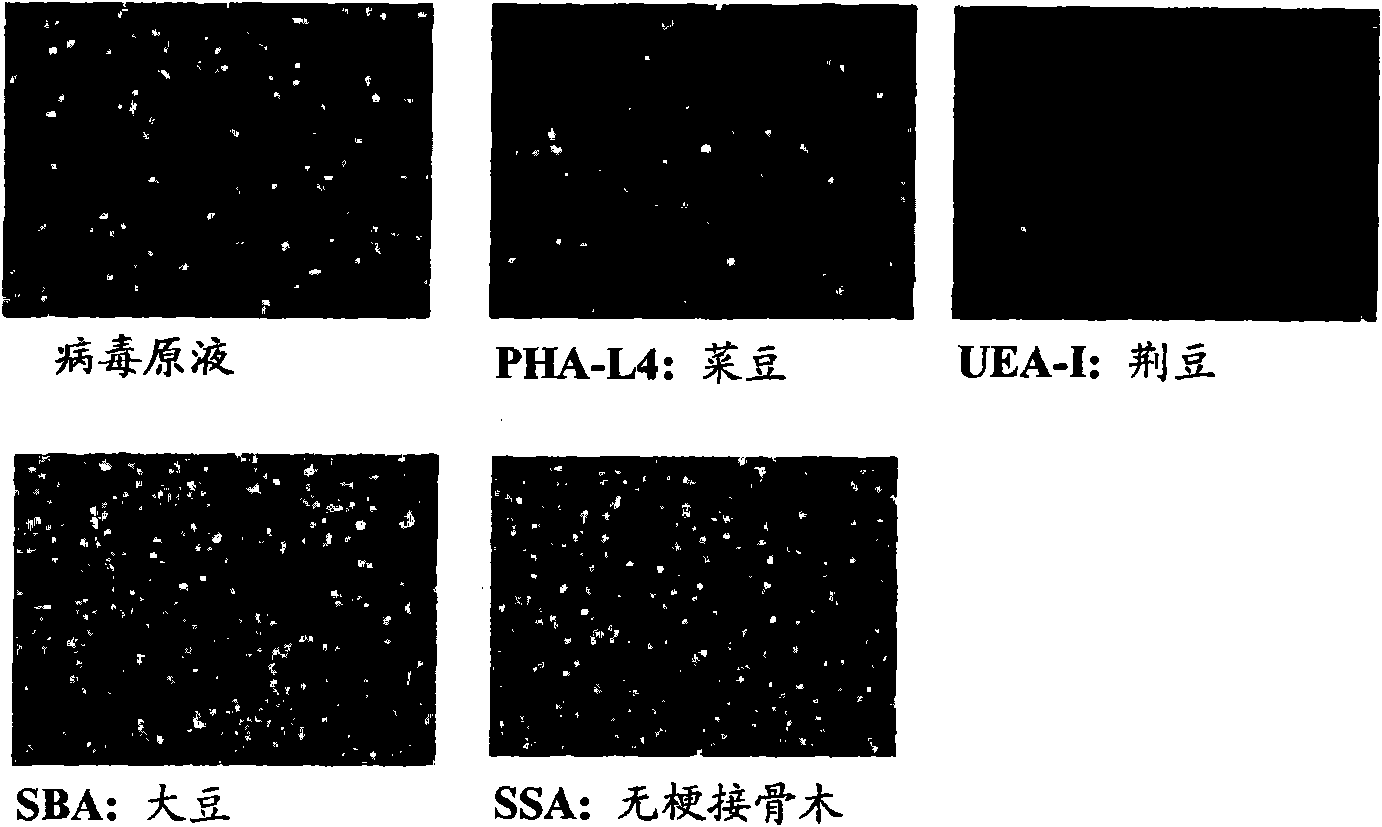Virus titration method
A virus and virus count technology, applied in biochemical equipment and methods, measuring devices, and microbial determination/inspection, etc., can solve problems such as hindering PCR, long separation time, expensive instruments, etc.
- Summary
- Abstract
- Description
- Claims
- Application Information
AI Technical Summary
Problems solved by technology
Method used
Image
Examples
Embodiment 1
[0225] Example 1 Exploration of lectins capable of detecting HHV
[0226] Biotinylated lectin was reacted with a solution of cultured HHV-6, and it was examined whether HHV-6 can be concentrated by binding to magnetic beads bound with tamavidin.
[0227] 1. Making HHV-6 Solution from Cultured T Cells
[0228] Human umbilical cord blood-derived cultured T cells were infected with recombinant HHV-6 (patent No. 3923505) expressing EGFP to prepare an EGFP-type HHV-6 solution.
[0229] 2. Preparation of tamavidin magnetic beads
[0230]Wash 300 μl of magnetic beads (Dynabeads M-270 Carboxylic Acid, Dynal Company) coated with carboxyl groups on the surface with 300 μl of 0.01N sodium hydroxide for 10 minutes, and then wash 3 times with 300 μl of ultrapure water, each time for 10 minutes. For the washed magnetic beads, add 1-ethyl-3-(3-dimethylaminopropyl)carbodiimide hydrochloride (EDC) dissolved in cold ultrapure water to make the final concentration to 0.2M, shake at room...
Embodiment 2
[0239] The quantification of HHV-6 in the saliva of embodiment 2 not using reference virus
[0240] HHV-6 concentrations in saliva were quantified using biotinylated lectin and tamavidin magnetic beads without reference virus.
[0241] 1. Collection of saliva
[0242] Saliva from the test subjects was collected using a saliva collection tube (Salivette Cotton, manufactured by Sarstedt). Immediately before saliva collection, the subjects rinsed their mouths with distilled water twice, and then held the cotton core of the saliva collection tube in the oral cavity for 2 minutes to collect saliva.
[0243] 2. Quantification of HHV-6 by Traditional Methods
[0244] First, HHV-6 concentrations in saliva were quantified using conventional methods.
[0245] For the 400 μl of saliva collected in the above-mentioned project 1, use BioRobot EZ1 (QIAGEN Company) and EZ1 Virus Mini Kit v2.0 (QIAGEN Company), according to the protocol of EZ1 Virus MiniHandbook (QIAGEN Company), HHV...
Embodiment 3
[0257] The quantification of HHV-6 in the saliva that embodiment 3 uses reference virus to carry out
[0258] For HHV-6 concentrations in saliva, quantification was performed using biotinylated lectin, tamavidin magnetic beads, and reference virus.
[0259] 1. Saliva collection method
[0260] Saliva from the test subjects was collected using a saliva collection tube (Salivette Cotton, manufactured by Sarstedt). Immediately before saliva collection, the subjects rinsed their mouths with distilled water twice, and then held the cotton core of the saliva collection tube in the oral cavity for 2 minutes to collect saliva.
[0261] 2. Quantification of HHV-6 using traditional methods
[0262] Quantification of HHV-6 in saliva was carried out by the same method as in Item 2 of Example 2. Moreover, the virus experiments in this experiment were carried out by extremely skilled experimenters. The results are shown in Table 1.
[0263] 3. Determination of HHV-6 using bioti...
PUM
| Property | Measurement | Unit |
|---|---|---|
| diameter | aaaaa | aaaaa |
| diameter | aaaaa | aaaaa |
| diameter | aaaaa | aaaaa |
Abstract
Description
Claims
Application Information
 Login to View More
Login to View More - R&D
- Intellectual Property
- Life Sciences
- Materials
- Tech Scout
- Unparalleled Data Quality
- Higher Quality Content
- 60% Fewer Hallucinations
Browse by: Latest US Patents, China's latest patents, Technical Efficacy Thesaurus, Application Domain, Technology Topic, Popular Technical Reports.
© 2025 PatSnap. All rights reserved.Legal|Privacy policy|Modern Slavery Act Transparency Statement|Sitemap|About US| Contact US: help@patsnap.com



